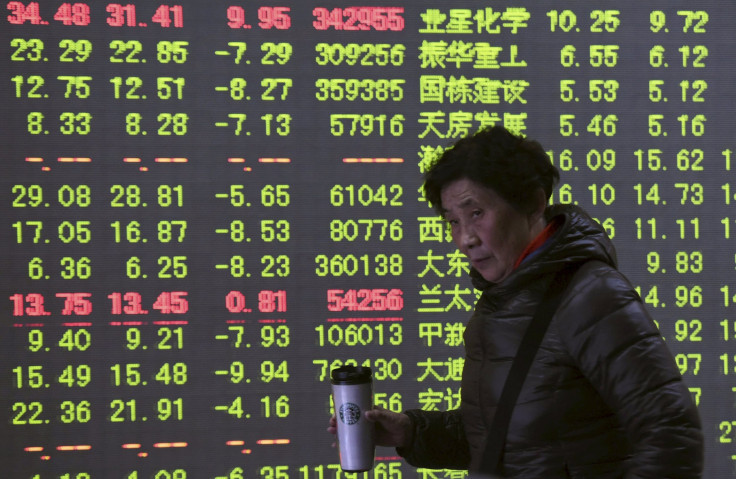Black Friday For China Stocks But Metals Not So Heavy

Chinese shares slumped 5 percent on Friday, hit by regulatory and industrial sector worries, though it wasn't enough to derail the first weekly rise for metals like copper and zinc since early October.
The Shanghai Composite index and the CSI300 both saw their biggest one-day drops in more than three months and ensured it was set to be a subdued post-Thanksgiving session for Wall Street.
Europe had a flat feel too. Britain's FTSE 100 was down 0.2 percent by 1230 GMT though 0.2 percent gains for France's CAC40 .FCHI and Germany's DAX left the pan-regional FTSEurofirst 300 heading for a token weekly gains.
"There is clearly a risk that China will try and devalue the currency further," said Ankit Gheedia, equity and derivative strategist at BNP Paribas.
"(However) Europe is still trading on the ECB next week, which is why the market is relatively resilient," he said referring to expectations of another round of stimulus.
The intensive selling in China had come amid signs its securities regulator was making a fresh clampdown on leveraged buying and combined with data showing a 4.6 percent drop in profits among big industrial firms.
The mining industry was the laggard with profits down 56.3 percent in the first 10 months of the year. Overall it was also the fifth straight monthly drop in profits, underscoring the pressure currently on China's giant economy.
The slump in Shanghai stocks brought a 25 percent rebound rally since late August to a shuddering halt and contributed the lion's share of a 1.1 percent weekly drop in MSCI's broadest index of Asia-Pacific shares outside of Japan.
Japan's Nikkei closed down 0.3 percent too though it ended the week marginally highly to extend a winning streak that started in the second half of October.
The jittery China mood ensured euro zone bond yields, which move inverse to price, nudged lower again as investors also kept positioning for the next salvo of ECB stimulus, expected at the central bank's Dec. 3 meeting.
They are paying more than ever for the privilege of owning shorter-term German, French, Dutch government bonds and yields on benchmark 10-year yields are also sliding again.
"The market is anticipating the ECB to act swiftly and decisively next week," said DZ Bank strategist Christian Lenk, highlighting bets that Mario Draghi and his colleagues will continue to hike up the cost of sitting on cash for banks.
"If you take the two-year Schatz (German) yield as the benchmark for the (ECB) deposit rate, the market expects a cut in the deposit rate by 20 bps to minus 0.40 percent, which we think is thinkable."
Not So Heavy Metals
The major currency pairs like the euro-dollar and dollar-yen were largely quiet as traders opted for caution over valor ahead of the ECB meeting and what is expected to be the first rise in U.S. interest rates in almost a decade next month.
The Swiss franc CHF= fell to its lowest against the dollar since August 2010 and dropped more than half a percent against the euro on speculation the Swiss National Bank will cut its rates even deeper into negative territory if the ECB moves.
The day's China theme was also compounded as the yuan hit its lowest level in almost three months as investors braced for the International Monetary Fund's decision on Monday on whether to include the currency in its reserve basket.
Spot yuan was changing hands at 6.3942, 46 pips weaker than the previous close and about 0.04 percent away from People's Bank of China's midpoint rate of 6.3915.
"It’s uncertain if the Chinese government is keen to show the market influence in their rate setting or whether now that they know they have gained special drawing rights inclusion they are keen to weaken their overvalued currency knowing it will not jeopardize their case," Angus Nicholson, market analyst at IG in Melbourne, wrote in a note.
For industrial metals, which have been being battered this year by worries about China's slowing economy and oversupply, it was a day in the red but not all gloomy news.
Global and particularly China growth-linked copper, aluminum and zinc all headed for their first weekly gain since early October.
With the dollar hovering near an 8-1/2 month high the pressure remains on commodity prices though.
Gold was near a six-year low and oil edged lower, though both U.S. crude futures, which were at $42.30 a barrel, and Brent at $45.43 a barrel were up roughly 4 percent and 1 percent respectively for the week.
© Copyright Thomson Reuters 2024. All rights reserved.





















